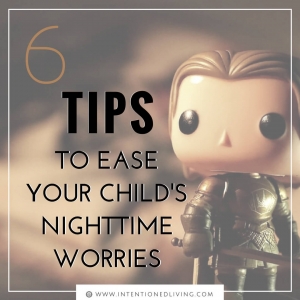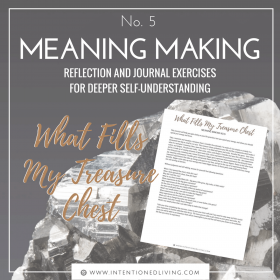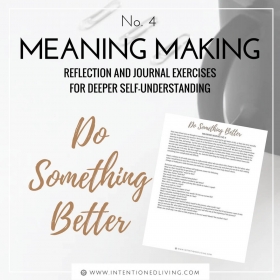
It’s not uncommon for children to experience some anxieties about nighttime at some point in their childhood. As adults we may even remember a time in our childhood when sleeping alone without our parents or a sibling was a terrifying endeavor. Our minds would race with fearful thoughts of monsters, ghosts, and strange creatures who we believed would pop up in our rooms in the middle of the night to terrorize us in some way. Our childhood way of coping could have included burrowing ourselves deep within our blankets and pillows, sleeping with the lights on full blast, or running to our parents and refusing to go back to our room or requiring them to spend the night with us.
These nighttime experiences are not only hard for children to bear – disrupts their sleep leading to fatigue, irritability, less optimal brain functioning for academic work, etc. but are also very trying on parents’ patience and endurance.
Here are 6 tips to help ease those nighttime worries and help both children and parents get a better night’s sleep.
MAKE A WELL COORDINATED ACTION PLAN
Sometimes these anxieties can be resolved by putting into action one technique, while other times it can take an arsenal of a few well coordinated interventions. In my work with children I have seen amazing change and relief come in a matter of several weeks once a clear and thoughtful action plan is put into place.
MAKE IT A JOINT ENDEAVOR
One of the keys to boosting the action plan’s effectiveness is to make it a joint endeavor between parents and children. This means that together there is a held understanding about the nighttime worry and a shared agreement to work on it together.
MAKE SPACE FOR YOUR CHILD’S FEARS AND ANXIETIES
Parents can start this process by making space for their child to tell them about their worry in whatever manner and depth they can, and to not inadvertently make comments that would result in their child feeling like they need to censor their worry because their parent doesn’t believe them or thinks that they should just get over it. I
n an effort to comfort their child and help fix the problem parents may unknowingly make comments such as “It’s not real, there’s nothing to be scared about” that may result in their child feeling invalidated and an increased need to keep their thoughts and worries to themselves.
For some highly anxious children and those that have been challenged by nighttime worries for quite some time, it may be difficult for them to begin speaking openly about what they fear. Be patient, take your time, and give them time. Their refusal and avoidance is their way of coping, a defense mechanism that helps to prevent them from being overcome with anxiety and fear in the moment.
In the typical “fight or flight” response that we all face when presented with a perceived danger or threat, they have resorted to the flight response (to move away from danger) because their fight strategies are not yet in place.
Start broaching the topic at a time when your child is relaxed and in a positive emotional state, also when you are relaxed and in a positive emotional state. It can be very helpful to have these discussions well before the bedtime hour, at a time when your child’s anxiety about nighttime is at its lowest.
And if your child is too scared to even say out loud what the source of the fear is, don’t worry, it’s helpful but not essential for you to know this in order to put an action plan in place.
GET CREATIVE – USE YOUR CHILD’S INTERESTS, SKILLS, AND STRENGTHS
Especially for young children who still hold magical thinking (the belief that one’s thoughts and desires can have a direct effect on objects and events; also the belief that mythical characters such as the Tooth Fairy and Santa Claus exist), there are various creative ways to combat that scary nighttime monster that parents often forget. Here’s a list of some creative techniques that I have seen put into action and work.
- Monster Spray – This is essentially a spray bottle with water or scented water. Adding a scent to the water helps your child feel confident that the spray has been applied and is “working”. If you use scent make sure it is a scent that your child senses as soothing, pleasant, and non-irritating in any way. To aid in the spray believability, you can also add a computer generated “official” label that talks about what it does, how much to spray, how quick it takes effect, what kinds of monsters it removes, etc. The possibilities are endless to tailor this to your child’s needs. And if you think your child is one who would love to spray everything around him/her until the bottle is empty, be thoughtful about the bottle you use, such as choosing a smaller bottle and one without a stream spray option.
- Warning Signs – Use some crayons and markers to create signs and posters that your child can put up in their room to warn those monsters to keep out and stay away. When parents join in and create signs too, when their child sees the sign at night it serves as a reminder to their child that you support them and are there in spirit battling the monsters with them. Signs can also take the form of pictures or posters of their favorite superheroes or real life superheroes (people in their life who love and protect them) placed strategically (where a monster will quickly see it). I have had parents take and print pictures of themselves making expressions and gestures meant to scare those monsters away. Having their child instruct them on the poses and help take the pictures is also a great way to build the child’s sense of mastery and confidence in being able to effectively use those “fight strategies” discussed earlier.
- Superhero Pajamas, Blankets, Toys, and Defense Moves – For children who still hold magical thinking in objects and characters, getting them special superhero pajamas can be enough to help them feel the power they need to begin standing up to those monsters. Have a discussion with them about what their favorite superhero would do and make it fun acting out the defense moves to take. Tuck into bed with them their superhero figure or doll to help them feel a sense of protection and safety. And snuggle them up in a superhero blanket with magical protective superhero powers.
- Booby Traps – This one can get really creative. I have seen children create elaborate traps with toys and string set in just the right places near a scary dark closet or as simple as a bell hung from a window or doorknob.
- Read Children’s Books on the Topic – This can be helpful for children who are still hesitant to talk openly about their fears and who don’t yet hold the confidence that it’s possible to combat these monsters. There are a variety of children’s books available depicting characters overcoming nighttime fears. Make sure to read through the book with your child in mind to choose the best fit, considering how he/she will relate to the main character, the particular monster, etc.
- Physical Comforts – Giving your child something of yours to sleep with such as a pillow/pillowcase with your scent or a piece of clothing can serve as a snuggly comforting object that they can hold onto and reminds them that you are close nearby in another room.
CELEBRATE WITH INCENTIVES
In addition to the techniques above, give your child kudos for the progress made with the opportunity to earn incentives. Discuss together what will be earned to celebrate each step of success (a night without going to parents, a night without crying, etc) and make sure that these are easily achievable to help build your child’s sense of competency and mastery, as opposed to creating another source of stress, anxiety, and self-esteem deflater.
GIVE KUDOS AND CHEER ALONG THE WAY
Give your child lots of positive feedback for every bit of progress made. Tell them how proud you are of them and your confidence in them, and always remind them that they are not alone and you are there to support them whenever needed. And don’t forget to give yourself a pat on the back too!
Additional reading you might enjoy :
7 Ways To Build Your Child’s Self-Esteem







